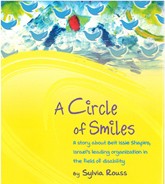By
– May 29, 2013
Sherlock Holmes is in the public domain now, which means that anyone can use the name and create a version of the famous Victorian, ornery-yet-brilliant, London sleuth. On the American silver screen, he was recently revived as an almost comical action hero with a cynical Watson by his side and a nutty, eccentric brother at his heels. On the British small screen, he was recently re-created as a modern-day private detective, engaged in patronizing assistance to the London police with a Dr. Watson who is a recently injured soldier returning from an Afghanistan battlefield, trying to fit back into life as a civilian. It’s all about cell phones and GPSs, modern transportation and technology, and police CSI work, with a Moriarty who is a modern-day terrorist in the style of the James Bond villains; a psychotic genius who is afraid of no one, of whom everyone else is terrified, and who has no convictions as far as humanity is concerned. The book at hand, Becoming Holmes, is the sixth, and final installment in the series The Boy Sherlock Holmes by Shane Peacock, written between 2007 – 2012. One need not read the entire series in succession in order to understand the current plot. Peacock kindly supplies the occasional reference to cases dealt with in the previous books but otherwise, it is fully self-sufficient.
The original Sherlock Holmes books, not atypical of the English literature of the time, are not kind to Jewish tradition, religion and culture. Although the books are not anti ‑Semitic, per se, Sir Arthur Conan-Doyle indulged in mild anti-Semitism on occasion, which is evident in some of the original books. Here, Peacock plays with what many avid Holmes fans and modern re-creators often obsess about, filling in the gaps in his otherwise missing early biography. Peacock chooses to make Holmes half Jewish, thus making Holmes’ efforts to move up in the world as a credible and respected detective more challenging by the mere fact of his “shameful” birth. Moreover, he is ridiculed, detested and almost ostracized by the fact of his parentage. There is little evident representation for Holmes as a Jew in the book. His name is Gentile as is his brother’s, his business is with Gentiles, and the reader never gains a clue as to whether his adopter and protector, the apothecary Sigerson Bell, is himself of Jewish heritage, despite his great closeness to Holmes’ parents, now dead. Yet Holmes cannot escape his parentage. The fact of his Jewishness comes up repeatedly. On many an occasions he is called “half-Jew” or “half breed”, even if a superlative such as “brilliant” precedes the offensive term. But his brilliance rarely opens doors for him before his half-breedness needs to be contested. At some point we are notified that the main, animal-like villain’s henchman “hates the Germans, the Dutch, the Irish, especially the Black Africans, and, of course, the Jews” (p. 164). “Jew-boy will die. Hate Jews. Hate” (p. 225), he cries vehemently in the last showdown scene. Another interesting Jewish connection provided by this Holmes re-creation has to do with Irene Adler, Holmes’ lifelong unattainable love interest. She starts out as a Gentile woman, Irene Doyle. But, after her father’s death, she goes to New York City and is adopted by Jewish family, thus bearing a Jewish surname forever aft er. While young Sherlock Holmes tries to prove to all and sundry that he is worthy despite his ethnic background, Miss Adler is depicted as perfectly comfortable in her adoptive Jewish skin and carries her name with pride and gratitude.
The Jewish subtext of the book is, if not central, still visible and noticeable. It gives us a genuine glimpse into the Victorian attitudes toward foreigners in their midst and how loathed many of them were.
Recommended for ages 10 – 14, the writing style is clever and engaging and the mystery plot is suspenseful and exciting, a true page-turner. Readers who missed other volumes in the series will wish to catch up.
Noa Paz Wahrman is a Jewish studies librarian and bibliographer at Indiana University in Bloomington IN.




